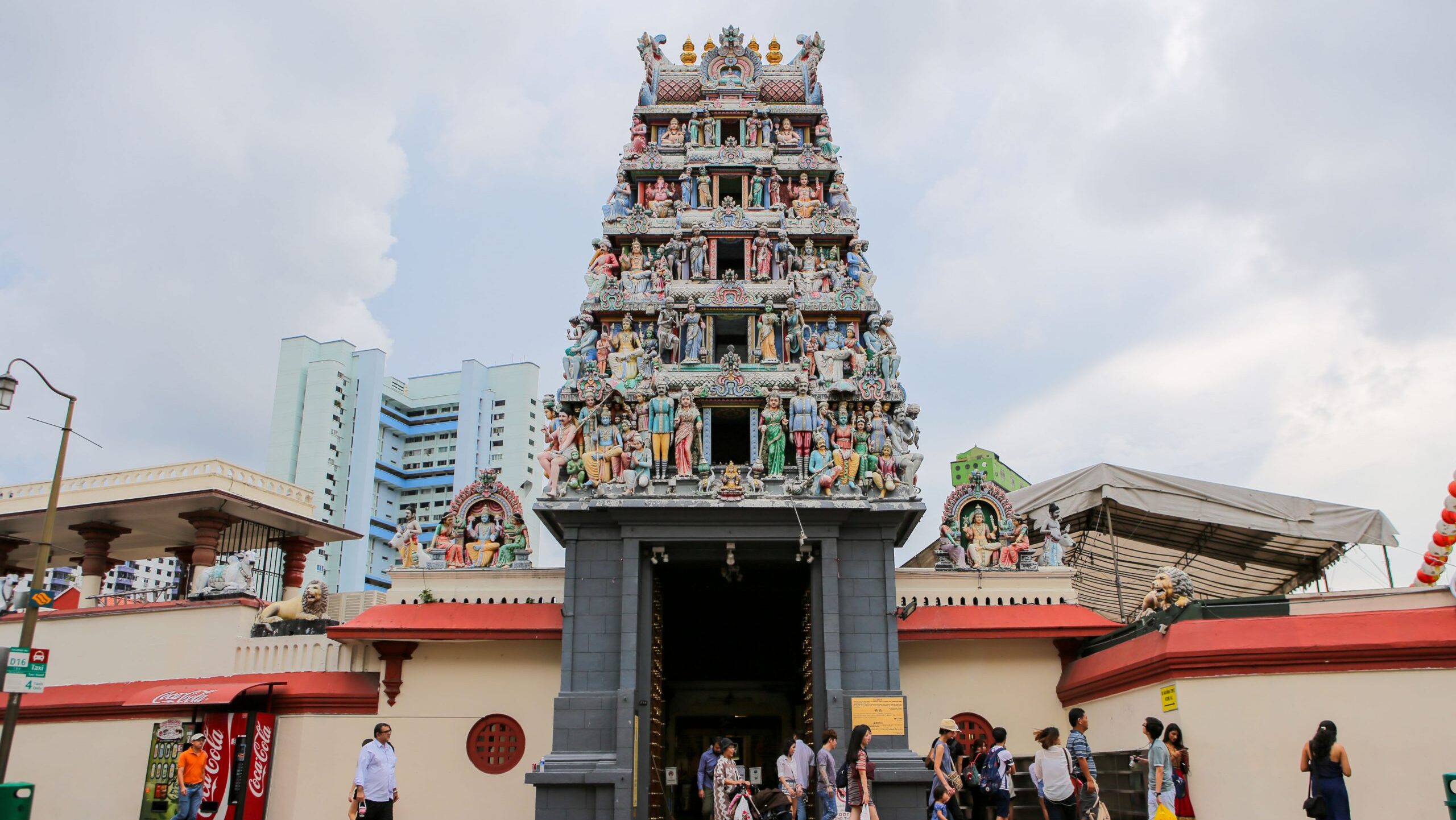Afterlives
May 22, 2025
Nestled along South Bridge Road in Singapore’s bustling Chinatown, the Sri Mariamman Temple stands out as a vivid landmark, in bold contrast to its urban surroundings. With its towering gopuram (the ornate entrance tower) lavishly adorned with intricately sculpted deities, demons, and celestial beings painted in jewel-toned crimson, emeralds, and golds, the temple commands both reverence and attention. Encircling the temple complex, sculptures of cows line the boundary walls around the compound. The Sri Mariamman Temple is an example of how devotional images continue to shape cultural life, not only as objects of worship but as anchors of identity and continuity for diasporic communities.
In the final chapter, of Ancient India: Living Traditions (The British Museum, 2025), titled ‘Afterlives’, Dr Sureshkumar Muthukumaran (NUS History) and Dr Sushma Jansari (Tabor Foundation Curator of South Asia Collections, The British Museum) explore the enduring legacy of ancient religious imagery. Such images, across Hinduism, Buddhism, and Jainism, transcend their origins to become living inheritances, carried across borders and generations. In places like the UK and Singapore, they invoke a sense of permanence and spiritual familiarity, reinforcing the ties between migrant communities and their regions of origin through ritual, memory, and visual presence.
Religious imagery has evolved to suit the needs of each new age. Iconographic forms, once traditional, have been repurposed and expanded for an ever-growing pantheon of deities and divine figures. Indian-derived iconographies have been incorporated into non-devotional contexts, particularly in popular culture, such as in Japanese manga artist Nakamura Hikaru’s Seinto Oniisan (Saint Young Men), which features the Buddha and Jesus in modern clothing. However, the appropriation of ancient religious icons in commercial or non-religious contexts is not always well-received. In Thailand, the commercial use of Buddhist images is strongly disparaged by many. In contrast, the depiction of Hindu god Gaṇeśa is more widely accepted in non-devotional contexts, as his playful and light-hearted nature has long been a hallmark of his ancient representations.
It is common to see Hindus, Buddhists, and Jains worship or show obeisance to each other’s religious spaces. This fluidity of identity is reflected in places such as the Erawan Shrine in Bangkok, which houses an image of the four-faced Phra Phrom (Brahmā). In Singapore, a temple dedicated to Kṛṣṇa houses an image of Avalokiteśvara (Chinese: Guanyin), while the Chinese Buddhist temple on the same street is dedicated Avalokiteśvara. In this regard, devotional images transcend strict religious boundaries and show the interconnectedness of religious traditions in global contexts.
Ultimately, the spread and adaptation of religious images have been deeply influenced by colonialism and post-colonial migration. Migrants bring their region-specific beliefs and devotional icons with them, establishing new temples and devotional art as a means to maintain their cultural identity and reinforce connections to their homelands. This enduring connection to their regions of origin highlights the importance of religious imagery in preserving cultural continuity, and sustaining community ties, particularly in diasporic contexts.
Order Ancient India: Living Traditions here.
Ancient India: Living Traditions is the official hardback companion to The British Museum’s major summer exhibition, exploring the rich religious and artistic traditions of ancient India and their global influence. Find out more about the exhibition here.

